Recently, I have taken a keen interest in the lives of migrant workers in Singapore after coming across an article on Mothership. It showcases the life of a Bangladeshi worker, Md Sharif Uddin, who had penned down poems in his diary about the harsh working conditions in Singapore, which today has been published into a local book — A Stranger to Myself.
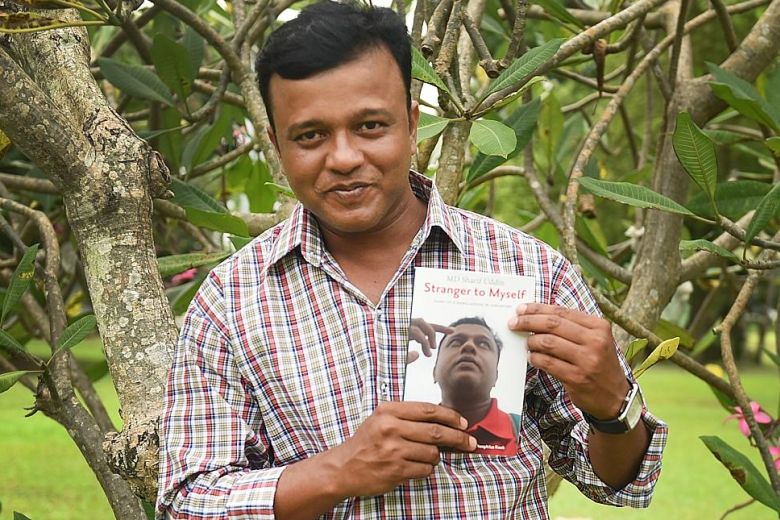
Image source
So I decided to research further and experience deeper to better understand them, which I feel as a whole is really an essential but often misrepresented part of society. Hence, I felt the need to write this article to debunk certain misconceptions we may have of migrant workers, why we should acknowledge migrant them as part of our society and lastly how we can best support them.
So who are migrant workers?
We often hear them operating cranes and drills, see them toiling on the roads and, for some, helping us at home. In this article, I will focus on migrant workers that work tough labour jobs, such as those in the construction and shipyard industries, and touch a bit on those serving in the domestic sectors too.
When we think of migrant workers, we may have already establish certain stereotypes of them. For instance, some of us may think of them as poor, uneducated, unpleasant, or even dangerous. However, these are not always true. Some of the prejudices we have of migrant workers may actually be misplaced and will be further addressed below.
1. All migrant workers are poor
While migrant workers come here to work mainly because they need to support their family back home or at least themselves, it is wrong to assume all of them are less well-off. Truth to be told, some of them do have decent family backgrounds to afford the migration fees to work in Singapore.
Migrant workers typically pay agent or recruitment fees that range from S$3,000 up to S$15,000 to get a job in Singapore, according to a paper released by HOME in 2017. This says that migrant workers have to be able to collect money to work in Singapore using their savings, selling their assets or asking for loans. Hence, migrant workers are not penniless for sure.
Source(s): AsiaOne
2. Migrant workers will return home rich
Some of us have the idea that migrant workers may earn low wages but it is ‘big money’ in their country. Unfortunately, this obscures the bitter reality that working in Singapore comes at a great cost too.
As mentioned earlier, most migrant workers have to pay costly recruitment and agent fees to secure employment in Singapore. Migrants from Bangladesh and India tend to pay between S$2,000 and S$12,000 to work in Singapore whilst often earning only between S$250 and S$1,000 a month. Often, some of them borrow money from friends, relatives and banks to pay these fees.
Domestic workers aren’t spared either. Although they do not pay recruitment fees directly, but most use their salary to service “loans” to their recruitment agencies first, which can at times be illegally expensive and cause domestic workers to work without pay for several months.
As a result, when migrant workers come here to work, they are paying off their debts first with their salaries for about half a year up to a few years while only having limited amount of money for personal expenses. And minimum wage won’t save them because there isn’t one in Singapore.
Furthermore, some of these agencies are not scrupulous in managing the salaries of their workers. They do not pay on time and worse they underpay their workers. With an unstable tenure, it is even a greater struggle for workers to pay off their already expensive agent fees. Therefore, most migrant workers remain indebted for long periods of time.
Source(s): The New Naratif
3. All migrant workers are uneducated
Some of us may assume migrant workers have poor education background because they are tagged as low-skilled ‘blue-collared’ workers. However, it is not always true. In countries like Bangladesh where some of the migrants come from, even educated people are not able to find decent jobs. Thus, many of them come to Singapore with promises and dreams that they will get a better job here and make it big back home.
For example, Md Sharif Uddin, the person who inspired me to write this and also the author of the award-winning book A Stranger to Myself, was a bookshop owner with a few staff members before his business failed. After that, he decided to come to Singapore to work. Also a construction worker, Md Zahirul Islam, gave up pursuing a degree and came to Singapore to earn money to help pay for his younger siblings’ university education. Aside from these two individuals, we do see talented migrant workers participating in poetry workshops and competitions.
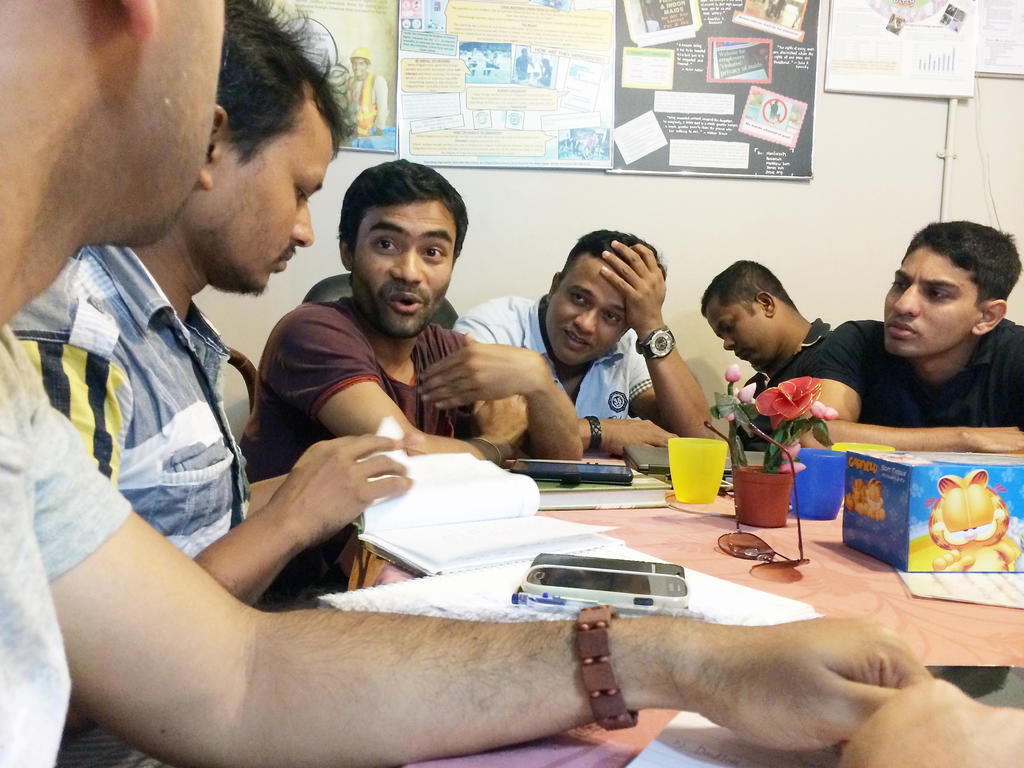
Image source
These examples suggest some migrant workers do have an educational background and they do possess skills, be it managing a business or having a good command of a language. So, we should not immediately associate migrant workers as lacking education because they can in fact be knowledgeable and capable.
4. Migrant workers are unpleasant
There is this prevailing idea some of us have that we welcome migrant workers here in Singapore but not in our neighbourhoods. Some of us feel uncomfortable and sometimes unsafe being around with them, which is justifiable to think this way.
Given past incidents that date back to the 1980s portraying migrant workers as potential criminals or jihadists and also the notable Little India riot in 2013, anti-foreigner sentiments have been lingering around lately. However, we shouldn’t let the past generalise our current perception of migrant workers. Shunning migrant workers away just because of a few who appeared threatening previously may just make the divide between locals and migrant worker worse.
Instead, we should strive to be open-minded and more understanding in how we perceive them rather than just accepting the way media and stereotypes portray them to be. I personally believe they can be like any other friends if we choose to hear them out.
Issues plaguing migrant workers
With the misconceptions raised, migrant workers today still face many welfare and mistreatment issues.
Migrant workers often work ‘3D’ jobs – dirty, dangerous and difficult – which many locals are reluctant to do. Consequently, they are often victims of workplace injuries and illnesses due to unsafe work environments, overwork and poor labour rights without much government intervention.
Not only do they struggle with the tough working conditions but they also have to worry about whether they’re being taken advantage of due to errant employers and loopholes in policies, which can be really distressing for them.
1. Poor welfare
Migrant workers who work in construction and shipyard industries are much more likely to suffer from serious accidents at their workplaces because of the hazardous nature of their jobs and possibly not being aware of safety protocols too.
Despite their tough work, the well-being of migrant workers are still not prioritised. Most migrant workers work overtime — nearly one in five of them worked at least 12.5 hours a day, according to a survey conducted in 2016. In addition, they have to deal with poor accommodation, living in dormitories where they sleep on bunk beds with over 10 other people in poorly ventilated rooms
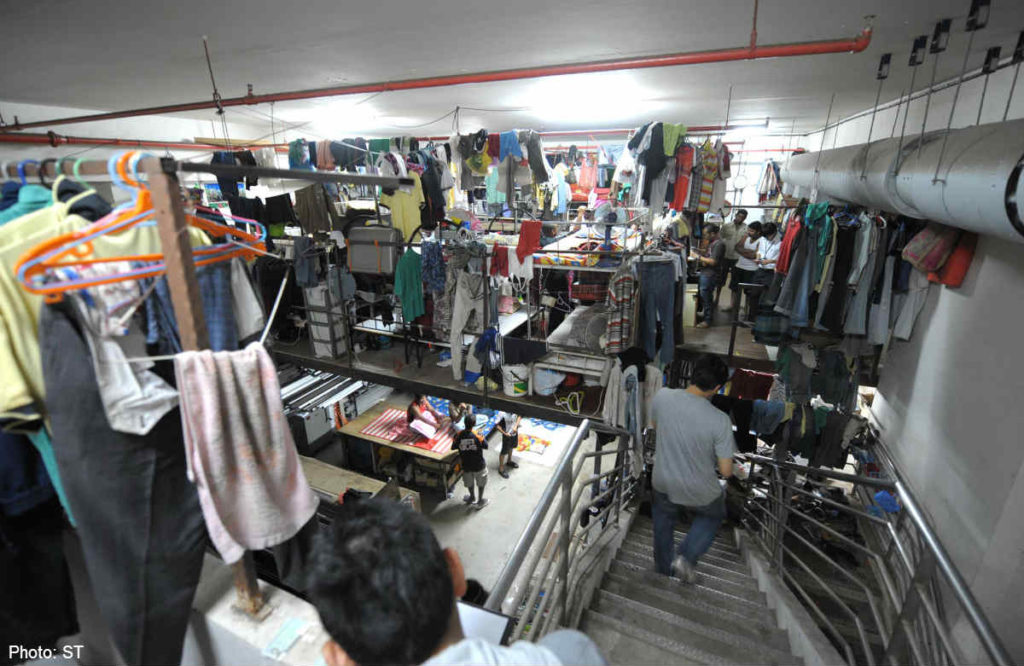
Image source
Workers also pay about $120 – $150 a month for sub-par catered food that has poor nutrition. For breakfast, they usually get flatbread with dhal or curry. Lunch and dinner are usually white rice with curry and one portion of meat and vegetable respectively. To maximise profit margins, catering services would deliver breakfast and lunch together to avoid double trips, but migrant workers risk eating stale food by the time they have lunch.
Thus, workers’ heath definitely suffer when they do not get enough quality sleep and an adequate diet to have sufficient energy to do laborious work for extended durations.
Source(s): Singapore Policy Journal
2. Vulnerable to exploitation
Moreover, many of them are susceptible to various forms of exploitation. Firstly, they are unaware of the work they are going to do in Singapore yet promised an attractive salary only to be underpaid or not paid at all. Dishearteningly, this is a common problem voiced out by NGOs like TWC2.
Existing laws also do not necessarily safeguard the interests of the migrant workers too from exploitation as some of them still fall through the cracks of these regulations, like the cap on local agent fees. Recently, migrant workers have paid higher agent fees than legally stipulated to middlemen in their home countries or illegal job brokers for a job in Singapore. The agent fees they paid on average were more than four times their average monthly salary instead of the legally allowed two times. So this worsens the debt bondage and ultimately their savings.
Worst of all, there are instances where migrant workers are forcefully repatriated back because their companies could not manage them. After all, under Singaporean law, their work permits are tied to their employers, who can terminate their permits any time and send them home. So many could be victims of forced labour, accepting what they have been given and asked to do for fear of deportation. Changing employers is also difficult because it requires upfront payment of recruitment fees when migrant workers do not have a lot of money to begin with.
Source(s): CNN, Singapore Policy Journal
With so many concerning issues raised, this begs the question
Why should we care?
As a country with about a third of our three million labour force that is non-resident with about 70% of this comprising low-wage temporary migrant workers holding work permits and 40% working in construction and domestic sectors, migrant workers are a large and substantial part of Singapore’s manpower. It is certainly unfair for migrant workers who play a key role in building Singapore by working back-breaking jobs in construction and domestic sectors to face such kinds of abuse and ill-treatment. For their contributions to Singapore’s economy, they too deserve a contribution from us.
Nationalities aside, migrant workers are humans too and they deserve humane treatment. Like us, they seek friendships, they want to share their stories, and they too have ambitions for a better future, but circumstances have made it difficult for them. While some of us may feel that they are just temporary workers, that does not justify why we should treat them without human dignity. The fact that they build and support our infrastructure we use and yet are being treated like tradeable commodities is just undeserving and appalling. Just as some of us would migrate overseas for better opportunities, we wouldn’t want to go through the same thing, right?
How can we help them?
While some issues are best handled by companies to adopt better business practices and the government to reduce systematic barriers and impose stricter regulations, I think, on our part, we should seek to understand them. Most of the time, they are both physically and socially isolated from the locals in their dormitories and work sites. Having someone different to talk to can make them feel appreciated and brighten up their day.
A simple way, I feel is to strike a conversation with them or volunteer your time with NGOs that work with migrant workers, like TWC2, MWC and HOME. If you’re really passionate about the cause, you can start your own initiative too or join many others out there!
Personally, after volunteering once for an event at Terusan Recreation Centre ItsRainingRaincoats, an initiative to spread kindness to migrant workers. I realised it is important to see migrant workers as friends rather than beneficiaries of a charity. I don’t think they would want to be seen as any different from us, especially as someone who desperately needs help. Instead, I feel they want to be understood by the rest and have friends like any normal people. While they would appreciate our gifts, I think they would value friendships and interactions more than anything else.
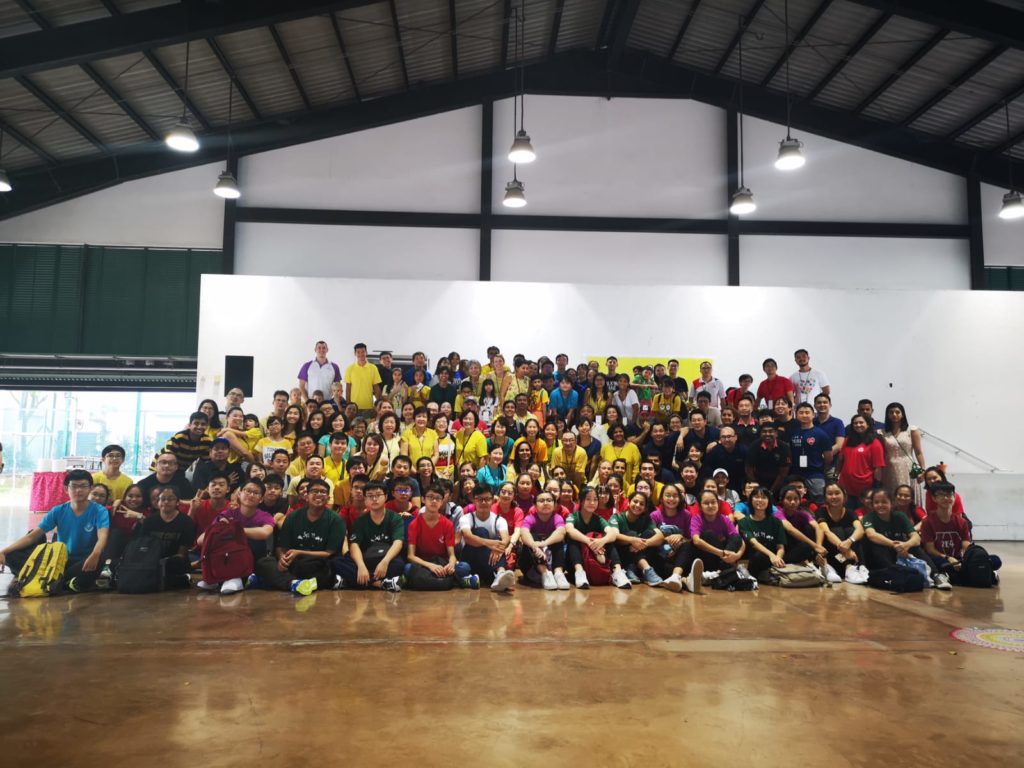
Can you spot me? 😉
I hope this have been an insightful (albeit long) read and would motivate you to do more for migrant workers. I believe if we work together as a community to integrate them into society, they too would be happy to work here and be more encouraged to give back to society. And hey, you can learn something making friends with them too!
If you have any comments on the topic itself or suggestions on what you would like to see, feel free to leave them below.
Further readings
- TODAY, The Big Read: Searching for the good life, miles from home
- AsiaOne, Why migrant workers can’t make S’porean friends
- TODAY, Migrant workers awaiting compensation face high rate of mental distress
- CNA, Commentary: Instead of robots or commodities, why not treat foreign domestic workers like fellow human beings?
- CNA, ‘Just like us’: Singaporeans open hearts and homes to migrant workers
- TODAY, The Big Read: Making Singapore a better place for workers who come from afar
- CNA, Singaporeans need to make sacrifices for migrant worker welfare: On the Record with Dr Goh Wei Leong, HealthServe
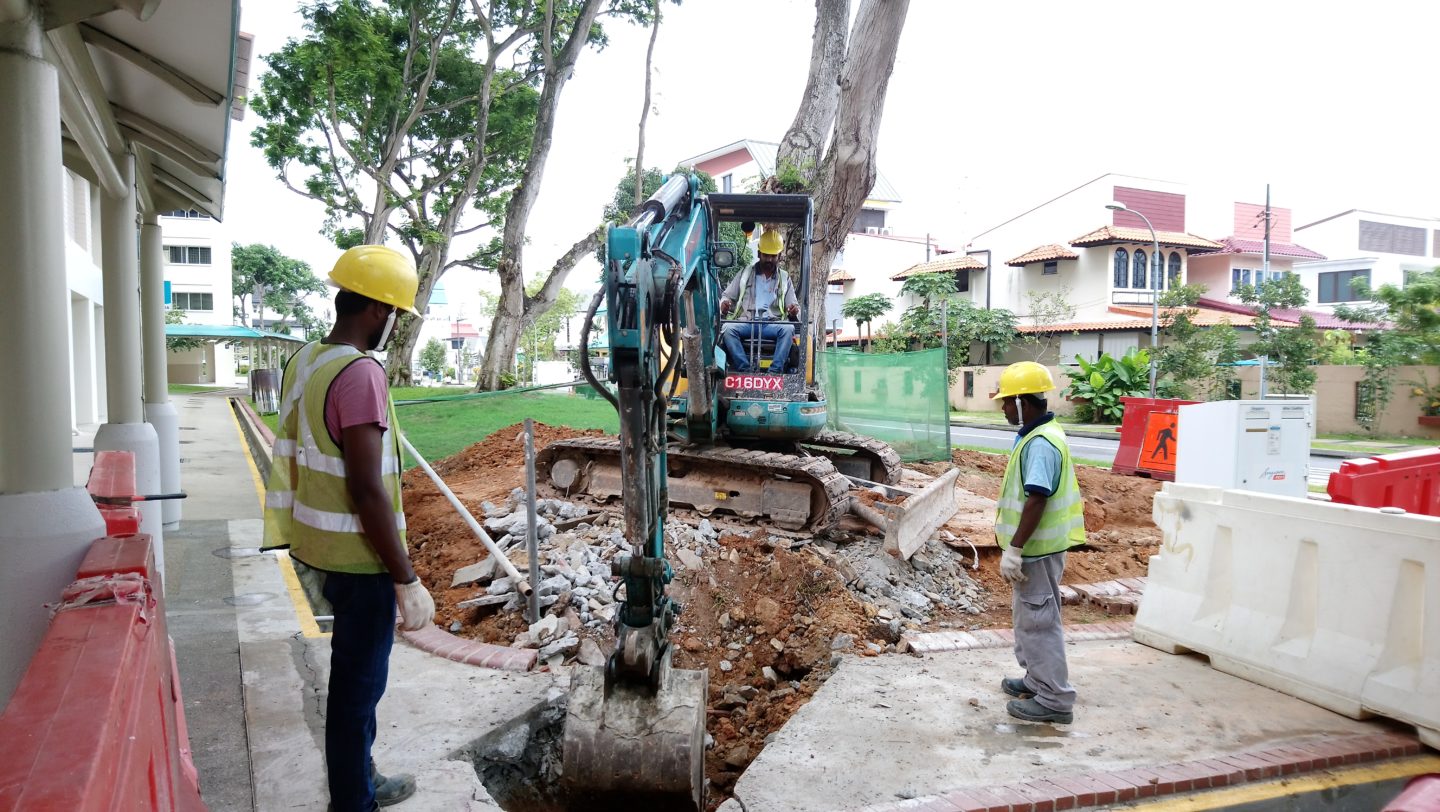
Interesting read 😊👍